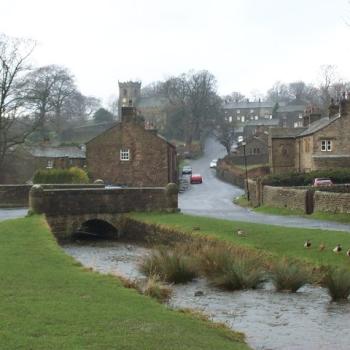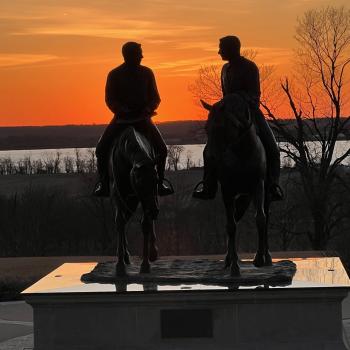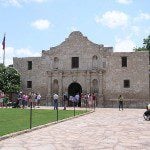
From a BYU panel on which I appeared with the British biblical scholar Margaret Barker some time ago:
It’s a privilege to be here, and I want to thank Dr. Barker for a really, really interesting, dense, and rich paper. What I’m going to do is not so much add to it or comment on it as do an improvisation based upon it. The thought that came to my mind as I was reading it, and as I was thinking about it just now as she was reading it was that, first of all, Latter-day Saints are naturally going to be very sympathetic to an attempt to view the temple as a model of the universe, something of a scale-model representation of reality. That’s a theme that is congenial to us, and I appreciate the temple focus here. So I’m going to talk about certain aspects of the temple as I see it, and about some matters related to deification or theosis from a somewhat different angle.
The temple is often regarded as a place of ascent; it is the mountain of the Lord’s house. And, in many Latter-day Saint temples worldwide, you actually do climb; you physically climb. That is, it’s not just a metaphorical climb but, in very many if not most Latter-day Saint temples, there is actually a rising up in the building. The Salt Lake Temple is a classic illustration of that. And you have a notion of ever increasing holiness as you go deeper into the structure—just as, on a horizontal plane, the temple in Jerusalem was organized. This is, as I say, sometimes a literal ascent, a physical ascent.
It reminds me of a story in the tradition that I spend most of my time with, the Islamic tradition, that’s very closely related to the temple. That is the story that is called, in Arabic, the mi‘raj or isra’—the night vision or ascension of Muhammad. This is a story that doesn’t actually show up in the Qur’an. Although there may be some Qur’anic allusions to it, they’re very unclear if they actually exist at all. But it shows up in traditions that date to a very early time in Islam after the death of Muhammad. Maybe, indeed, and as they claim, they go back all the way to him.
In that story, Muhammad is taken either before or during his ministry, from some place, some physical location, the identity of which varies depending on the account. Sometimes it’s said to have happened when he was very young and it’s in Mecca. Sometimes it’s when he’s older and he’s in the city of Medina. In all of the variant accounts, however, he is awakened in the middle of the night by three angels, Gabriel being in the lead, who take him off in a miraculous way from wherever he starts to Jerusalem, and specifically to the Temple Mount, which I think is significant. When he’s there on the temple mount, he leads the prior prophets in prayer and then there appears to him a mi‘raj—which can mean ascent but can also mean a means of ascent, a ladder or a staircase or something like that. And by means of this mi‘raj he climbs up or ascends through the seven heavens into the presence of God, who is always depicted in these stories as being literally enthroned in the highest heaven.
Now, that story became very, very significant in Islamic tradition. Subsequent mystics tried to replicate it. You get all sorts of variations on it. It’s often taken as metaphor. The mystics are trying to ascend into the presence of God through a sort of mental or spiritual process; for them, it’s not a literal ascent through physically distinct heavens. But nonetheless, it’s an ascent, the journey of the mind to God—the Itinerarium Mentis in Deum—as St. Bonaventure (d. 1274) called it in the West. It also becomes a standard feature in some areas of Islamic philosophy–in al-Farabi, Ibn Sina, al-Kirmani, and others roughly in the tenth and eleventh centuries. They have a philosophical view of the same thing. But their conception of ten steps up to the presence of God is correlated with their understanding of Ptolemaic astronomy; they’re passing through the planetary spheres in order to ascend up into the presence of God.
***
As I write, I’m about to leave for the studio of K-Talk (1640 AM), where I’ll join Allen Wyatt and John Gee for two hours of discussion (from 7 PM to 9 PM, Utah time) on the weekly Interpreter Radio Show. Beyond the Wasatch Front, the Intepreter Radio Show can be heard online, via the K-Talk website.












